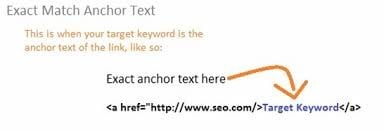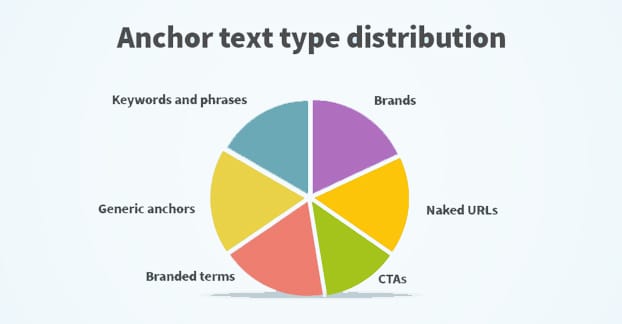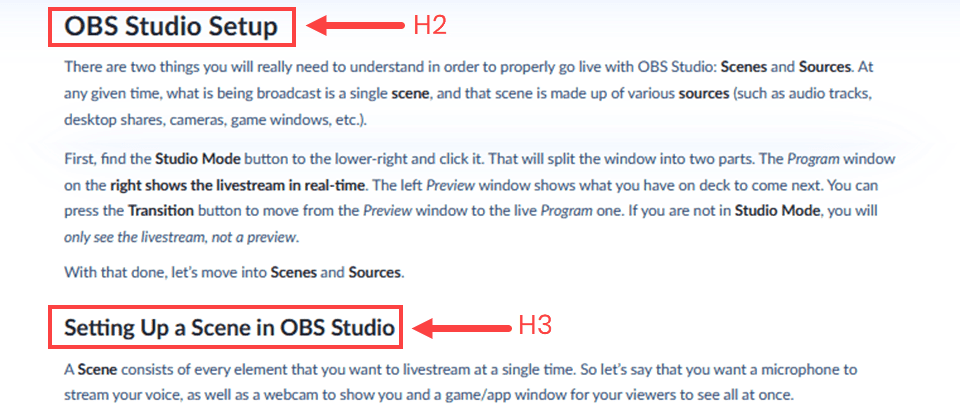The Importance of Anchor Text in SEO
Search engine optimisation (SEO) is critical for your brand if you want to be seen on platforms like Google. To dominate this marketing tactic, investing in SEO is paramount.
This technique is effectively focused on embracing Google’s AI and algorithms so that you’re positively indexed and ranked within search engine results pages (SERPs).
When done right, these rankings provide your business with an increase in website traffic, conversions, leads and ROI.

There’s plenty of components that go into the formulation of SEO and ‘rankability’. One of the most important, however, is anchor text is one of the criteria that Google’s AI crawlers will be looking for, and this includes any blue text that connects one website to another.
For example, this is the anchor text that leads to our website in this article. So, what is anchor text and what’s the importance in relation to SEO? Let’s take a deep dive and get to know anchor texts, what it is and where to apply it.
What is anchor text, and why is it important to SEO?
Anchor text is visible, clickable text that’s associated with the article or website linked to it. It effectively and provides inspiration and motivation for readers to click through to that destination.
On an SEO level, however, it gives Google content, providing a connection with the URL, as well as relevant keyword matches. It is also considered HTML coding and looks like this usage on our website, as an anchor text example:
<a href=”https://www.edgeonline.com.au/”>our website</a>

What are the different types of anchor text?
There are several different types of anchor text best practices to consider, including:
- Exact match anchor texts
This is where you use the same wording for your anchor text as it appears in the URL on your page or the external website. For example, if you are connecting to a site about anchor text SEO, you would use the words “anchor text SEO”. 
- Partial-match anchor texts
This uses a variation on the keyword; for example, you could use the wording “anchor text example” when connecting to a website about anchor texts.
- Branded anchor texts
This is when you use the brand name to connect to their website like we would use our brand name Edge to link to our website.
- Naked link anchor texts
This is when you put the complete URL in your content like www.edgeonline.com.au.
- Generic
This is usually a call to action, like click here or learn more.
- Images
The text in the image’s alt attributes will be used as the anchor text for Google to read.

Anchor text is good for user experience but is it good for SEO?
It is very good for SEO, but only if you follow white hat guidelines to ensure Google will correctly use them to rank you highly.
That means that they need to be succinct, relevant to the page or destination you are linking to, not overly stacked with keywords (less is more here) and not generic – unless that’s what you’re aiming for.
Back in the Wild West days of the internet, pages would often stack their pages with exact match anchor text flooded with keywords.
These types of anchor text mentions actually cause more harm than good. It meant that pages could rocket straight to the top of Google searches they weren’t even relevant to.
Since then, Google has done a lot to clean up this mess, most notably in the Penguin algorithm update. As a result, you need to be a bit savvier to get the SEO benefits out of using these links.
That is not to say that anchor text is not beneficial; it is highly beneficial. It enables Google to get a thorough comprehension of what each page is about and ensure it is matched to the right searches and the right audience.

Breathing new life into old content
Here’s a simple hack for you when you’re asking “What is anchor text?”
You can also use anchor text for breathing new life into old articles. If you have written a new piece of content relevant to older works you have published, head into those older articles and connect them to the new content through anchor text links.
Google favours fresh and unique content, and making these changes to old pieces will boost your page’s likelihood of getting improved results in searches.
This is also beneficial for your audience as they can easily click through to relevant content to the piece they are reading.
It provides more value to them and keeps them on your website for longer, making them more likely to take action either then or in the future.
Internal and external linking with anchor text
There are two primary ways you can use anchor text, connect to other pages on your website (or different parts of the same page), connect to a different destination to provide value like sources, etc.
We have mentioned the exact match already, and this should be avoided with internal links. This is duplication (which is not suitable for SEO) and but it can attract Google penalties.
Be sparing with your redirects as well, and choose the essential words and phrases. Highlighting an entire paragraph looks and performs terribly.
External anchor text will give Google confidence that your page is about the topic you intend it to be about.
For example, if you have a page selling plumbing supplies and externally connect to plumbing articles, etc., on other websites, Google will gain more confidence that your page is about plumbing.
It also helps make your site and page reputable when you provide links to sources and resources that provide value to your visitors.
How do I create anchor text?
This is a straightforward process. To create anchor text, all you need to do is highlight the text you want to redirect to a website or page.
Then you need to copy the URL that you want to be included. There will be an option in your toolbar to insert the link onto the anchor text, or you can right-click the highlighted text to find this option.
Paste in the URL and click enter and your connection should now appear highlighted in blue and underlined.

This process is also used to create hyperlinks, and indeed, the two things are very similar. The difference is that a hyperlink exclusively connects to a different website or URL where anchor text can also be used to redirect to another part of the page at the same URL.
This is where HTML coding is used, and it means you can deliver people to particular parts of websites, including your own.
It is very effective in calls to action, so you can direct people to contact fields that might be on the same page they are reading, for example.
Use the keywords that you want to rank for in your anchor text
This comes back to anchor text best practices which state that you should not be stacking your links full of keywords.
You need to be highly selective here and ensure that you are using the keywords you want to rank for in Google searches. These need to be matched to the site or page you are redirecting viewers to as well.
For example, Edge wants to rank highly for SEO, so that is the wording we use in our link to take people to the URL www.edgeonline.com.au/seo/.
This can improve your SEO in two ways. Firstly, Google can see the internal and external links and identify that they are relevant to enhance the SEO of that page. Where the significant gains come is when multiple sites are linking to your page.
For example, if you are a Broadbeach Plumber and multiple sites link to your website using the anchor text Broadbeach Plumber, Google will see that your page is reputable.
This, in turn, means that Google will put your site towards the top of the rankings because relevant, reliable and reputable links are what it wants to deliver to its users.
More tips on improving your anchor text strategies

Those are the fundamentals of anchor text, but there is a lot more to do it. Here is our checklist of things to do and things to avoid so that you have the best strategy possible to optimise your pages for SEO:
Ensure the anchor text is relevant to the link
If you are using the words premium cat food but redirecting to a page that has nothing to do with premium cat food, you will alienate and confuse your audience.
Worse, you will confuse the Google AI as well, and because there is no relevance, you will get no SEO benefits.
Vary the keywords you use for the anchor text
Many anchor links using the keyword I am trying to rank for will achieve SEO success, right? Many people have had that thought before, and Google is well and truly on top of it.
Carpet bombing your text with anchors using the exact keywords is more likely to earn a Google penalty today than search engine rewards.
Vary your keyword use as there are multiple words and terms that you want to rank for anyway, and ensure that they are relevant to the page you are redirecting to.
Write descriptive anchor text
There are occasions where you want your anchor text to be short, sharp, and to the point – like in the instances where you want a generic text for a call to action like ‘act now’ or ‘click here.
It is important also to remember that these connections aren’t just for Google; they are for real human people reading your text.
You want to provide descriptive, meaningful anchor text that will make them want to click through and learn more, potentially take action like make a sale or fill out a contact form.
Use Google Analytics for tracking
When you set an anchor link to a page on your page, you can track the traffic using Google Analytics. Go to Behaviour, Site Content and then All Pages and the tracking data will be there with all of the other data from the page.
This will help you understand your visitors, including their behaviour better, how they interact with your website, what content is working and which content might need to work.
This is an excellent way to optimise your site, so you are more likely to get sales and conversions.
Space them out
Don’t just place this text at the bottom of the article; that is lazy, and it will not provide a lot of benefits. Put these anchor text everywhere they are relevant, and there are logical connections between pieces of content and matching pages on your website.
The goal should always be to provide value to the reader, with SEO benefits coming organically off the back.
Use follow links
No-follow links will not improve your SEO or improve your page ranking and are only used in specific circumstances.
If you have purchased a link or you are worried the link might get you penalised, then you can use a no-follow link. But the better strategy is not to use the link at all and find a more reputable site that can use a follow link.
What to avoid with anchor text
There are some traps and pitfalls to be avoided when it comes to anchor text. Here are some of the things that you should avoid when putting them on your website:
Avoid using generic anchor text:
Unless you are using this anchor text as a specific call to action, you want to be a bit more compelling with these connections.
Remember, you want people to click through, to give them a reason to want to find out more, don’t just literally put ‘find out more as your text.
Just ensure that the text you are highlighting includes the right keyword and is relevant to the site or page you are redirecting to. Otherwise, be creative and imaginative to entice the reader to click through.
Do not link your anchor text only to your home page
The main reason you are using these anchor text links on your website is to get Google to rank as many of your pages as possible and to capture your audience and get them clicking through to find out more about your brand.
Funnelling people straight back to the homepage is a surefire way to get them to click away and find another business in their search results. You are also putting all your eggs in one basket when it comes to Google searches.
Stay away from spammy sites
There are a few layers to this. Firstly, you should never be manipulative by sending readers to a dodgy site by promising something that will not be delivered.
Google doesn’t like it; your audience doesn’t like it, don’t do it. Very few people are out there trying to mislead people or intentionally send them to a malicious destination.
That is why it is essential to do your homework and verify sites before sending anchor text their way. Low-quality links are not going to be beneficial for your SEO, and your audience will find little value in them as well.
Don’t over optimise
SEO can be a bit like a lovely glass of wine – you don’t want to overdo it. Saturating your pages in anchor text or any other keyword or linking strategy will be viewed as a red flag by Google, and you could find that you get penalised by the search engine instead of rewarded. Your audience doesn’t want to be greeted with a screen lit up with blue links either, be sparing and intelligent with how you use them.

Using too much anchor text is called over-optimisation, and this applies to your keywords as well. Do an audit of your site and see how many times your keywords are repeated.
The exact keyword should not be used in any more than 10 per cent of your total anchor text.
If you’re not sure about the anchor text definition or how to best navigate them, we recommend getting in touch with our SEO team; we also offer SEO Gold Coast services.












